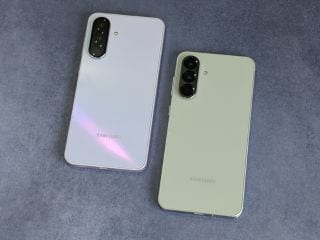- Home
- Mobiles
- Mobiles News
- Qualcomm Announces Plans for 5G Chips Across Snapdragon 8, 7, and 6 Series in 2020
Qualcomm Announces Plans for 5G Chips Across Snapdragon 8, 7, and 6 Series in 2020
LG, Motorola, Nokia, Oppo, Realme, Redmi, and Vivo brands announced plans to use the new integrated Snapdragon 7 series in future 5G mobile devices.

Qualcomm promised on Friday to bring 5G mobile phones to the masses with a high-end modem and said its chips would also power mid-price devices hitting the market next year. Fifth-generation chipsets from Qualcomm, the world's biggest supplier of mobile phone chips, now run on five devices from Samsung Electronics, including the $1,299 Galaxy S10 5G model and the new $2,000 Galaxy Fold.
The company at IFA 2019 announced plans to "accelerate 5G global commercialization at scale by expanding its portfolio of 5G mobile platforms across the Snapdragon 8 Series, 7 Series and 6 Series in 2020."
Samsung, the world's top smartphone seller, has also put Qualcomm chips in its lower-priced A90 5G model, which had used Samsung chips in an earlier version.
Qualcomm President Cristiano Amon predicted such devices would achieve volume and scale.
"The transition to 5G is going to be faster than earlier transitions," Amon told Reuters on the sidelines of the IFA consumer electronics fair in Berlin. "Now we have to bring it to everyone."
More than 20 network operators and a similar number of smartphone makers - from the United States to Europe to China - are launching 5G services and handsets. Amon estimated there were 2.2 billion mobile users that could upgrade.
Such bullishness contrasts with the challenges faced by China's Huawei, the No.2 smartphone seller behind Samsung that also unveiled its 5G chipset at IFA.
Huawei's consumer business chief Richard Yu touted the Kirin 990 chipset at IFA as the "most powerful" and superior to Qualcomm's Snapdragon 8 series.
Due to US trade sanctions, Huawei's 5G-ready Mate 30 smartphone range to be launched on September 19 could be hobbled because it won't be able to run the official version of Google's Android operating system and app services.
Mass appeal
Until now, Qualcomm typically supplied 5G chips from its most expensive line, Snapdragon 8, which on Friday was showcased with a more powerful X55 5G modem delivering speeds of up to 7 gigabits per second. More details on the next generation Snapdragon 8 Series 5G Mobile Platform will come later this year, Qualcomm said.
It now plans to add 5G capabilities to lower-cost Snapdragon 6 and 7 series devices, which could make 5G phones available more cheaply than the current mostly premium models.
Qualcomm's 6 and 7 series Snapdragon chips are found in devices from Lenovo's Motorola, Xiaomi, Oppo, and Vivo that retail in the $300 range. It has announced that twelve brands, namely LG, Motorola, Nokia (HMD Global), Oppo, Realme, Redmi (Xiaomi), and Vivo have announced plans to use the new integrated Snapdragon 7 series in future 5G mobile devices. Qualcomm says it began sampling the series to customers in the second quarter of 2019. The first devices can be expected to launch soon after the fourth quarter.
Analysts say faster 5G networks will spur many consumers to upgrade their phones after years of market stagnation, although 5G devices are coming to some markets before networks are completed.
"Qualcomm have done a phenomenal job to drive the 5G ecosystem," said industry analyst Paolo Pescatore. "It's going faster than anyone could have ever imagined."
That puts a premium for Qualcomm on partnering with carriers to market new devices. It's typical for operators to market subsidised handsets in the United States, but less so in Europe.
In Germany, Deutsche Telekom switched on its 5G network in five cities this week, marketing the Snapdragon-powered Samsung Galaxy S10 5G to early adopters.
Full spectrum
Qualcomm was early to market 5G modem chips to connect phones to networks but faces intense competition. Taiwan-based MediaTek Inc also announced a 5G smartphone chip this year.
Qualcomm is positioning itself to be compatible with the full range of frequencies deployed by regulators to run 5G.
These include so-called 'sub-6', or spectrum below 6 Gigahertz that has been predominantly auctioned by European governments making an early start on the shift to 5G.
The United States has auctioned more millimetre wave frequencies with a shorter range but higher data-carrying capacity needed to realise the full range of uses of 5G, such as autonomous driving.
Unlike rivals, Qualcomm is designing its chipsets to handle frequencies "from A to Z", said Amon, adding that flexibility to switch between 4G networks and new 5G networks was critical.
Chips from MediaTek can only handle sub-6 bands, reducing the cost and complexity of the chips and phone designs.
But it means the phones cannot take full advantage of networks from US carriers such as Verizon Communications and AT&T that use millimetre wave technology.
Catch the latest from the Consumer Electronics Show on Gadgets 360, at our CES 2026 hub.
Related Stories
- Samsung Galaxy Unpacked 2025
- ChatGPT
- Redmi Note 14 Pro+
- iPhone 16
- Apple Vision Pro
- Oneplus 12
- OnePlus Nord CE 3 Lite 5G
- iPhone 13
- Xiaomi 14 Pro
- Oppo Find N3
- Tecno Spark Go (2023)
- Realme V30
- Best Phones Under 25000
- Samsung Galaxy S24 Series
- Cryptocurrency
- iQoo 12
- Samsung Galaxy S24 Ultra
- Giottus
- Samsung Galaxy Z Flip 5
- Apple 'Scary Fast'
- Housefull 5
- GoPro Hero 12 Black Review
- Invincible Season 2
- JioGlass
- HD Ready TV
- Laptop Under 50000
- Smartwatch Under 10000
- Latest Mobile Phones
- Compare Phones
- Honor Magic 8 RSR Porsche Design
- Honor Magic 8 Pro Air
- Infinix Note Edge
- Lava Blaze Duo 3
- Tecno Spark Go 3
- iQOO Z11 Turbo
- OPPO A6c
- Samsung Galaxy A07 5G
- Lenovo Yoga Slim 7x (2025)
- Lenovo Yoga Slim 7a
- Lenovo Idea Tab Plus
- Realme Pad 3
- Moto Watch
- Garmin Quatix 8 Pro
- Haier H5E Series
- Acerpure Nitro Z Series 100-inch QLED TV
- Asus ROG Ally
- Nintendo Switch Lite
- Haier 1.6 Ton 5 Star Inverter Split AC (HSU19G-MZAID5BN-INV)
- Haier 1.6 Ton 5 Star Inverter Split AC (HSU19G-MZAIM5BN-INV)







![[Sponsored] Haier C90 OLED TV | Dolby Vision IQ, 144Hz OLED and Google TV in Action](https://www.gadgets360.com/static/mobile/images/spacer.png)









